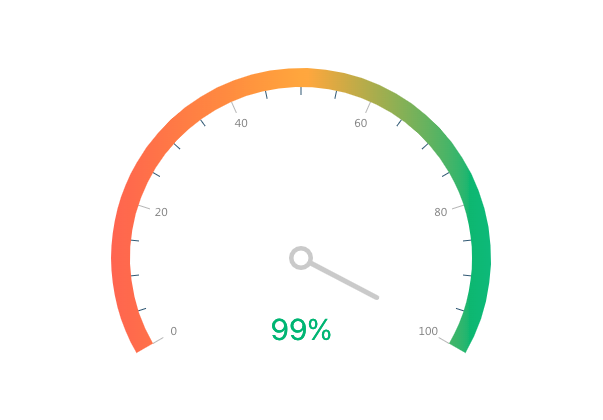When building a TCoE, careful planning is crucial, so it doesn’t just become another testing lab. Metrics must first guide the work of the CoE, and those metrics should be shared with the entire technical staff responsible for software development, plus the C-suite.
As a critical component, use automated software testing tools from the start. They provide an efficient and cost-effective way to ensure that software functions properly.
To speed ramp up and leverage experience, consider outsourcing all or part of your software testing CoE to an experienced team who has built these programs. By doing so, you can dramatically reduce learning errors and increase ROI.

It Begins With Metrics
Software Testing CoEs can provide a solid foundation for product quality throughout the development life cycle.
When defining what excellence looks like in the effectiveness of automated testing tools, the best approach is to set up testing metrics first, benchmark them, then use the data going forward to measure success or failure.
Examples of metrics include:
- Quality Score: A comprehensive number that represents the overall quality. This is important so that the entire organization clearly understands how the product is improving over time. Executives, developers, and cross-functional teams will get lost in the weeks of test metrics, so give them one. Tools like QualityWatcher, have a QualityMeter that gives one score per product that is easy for the entire team to grasp. You can contact them to learn more about how they calculate Quality.

- Cost Savings by Automated Test. Often we talk in terms of time savings. This doesn’t hit home for most executives. It’s critical to determine the return on investment from automated software testing tools and identify which automated test cases provide the most value. QualityWorks helps its clients calculate these metrics to ensure that leadership sees that an effective TCoE is a massive cost-cutting initiative.
- Percentage of Test Cases Automated by Priority. You want to make sure that the test that matters is automated first.
- Defects in Production – The bottom line for testing. How many bugs are ‘acceptable’ in the production use of the software vs. how many are found after testing? We want to ensure that we focus on customer value and experience. If your TCoE doesn’t know and track these numbers, they are missing out on critical feedback to improve their testing strategy.
By setting up benchmarks and tracking these figures, plus any additional metrics that may be important to your team’s goals and objectives, you can effectively plan and measure the usage and success of automated software testing tools in your excellence center.
Transparency
Transparency and sharing metrics are critical when creating a software testing center of excellence (CoE). CoE is designed to provide the organization with a centralized team of experts focused on improving software quality and efficiency.
To achieve these broader objectives, the CoE team needs to have a deep understanding of the organization’s software development process and access to accurate and up-to-date information about the performance of the software. This is where transparency and sharing metrics become crucial.
Transparency ensures that everyone on the development team knows the CoE’s activities and how they contribute to software quality. By sharing information about the CoE’s processes, metrics, and successes, the team can collaborate more effectively and identify areas for improvement. Everyone can work together to solve problems and make informed decisions with access to the same information.
Sharing metrics is another critical component of a successful CoE. Metrics help to track progress, measure performance, and identify areas for improvement. By sharing metrics with the entire development team, everyone can understand how they contribute to the organization’s goals and how their work impacts software quality. Additionally, sharing metrics can help identify areas of improvement, allowing the team to make data-driven decisions and take action to improve processes and tools.
Transparency and sharing metrics are crucial when creating a software testing center of excellence. This way, the development team can collaborate more effectively and make data-driven decisions that improve software quality and efficiency. Ultimately, this leads to better products, happier customers, and a more successful organization.
Automated Testing
Automated testing software can make a Center of Excellence (CoE) successful. Like metrics and transparency, it’s vital to place automation at the top of the list when starting your center. Don’t put it on the roadmap to execute later. Automated testing should be a key pillar at the launch of your center.
- Consistency: Automated testing software can help ensure that tests are executed consistently, reducing the risk of errors and inconsistencies in testing results.
- Speed and Efficiency: Automated testing software can execute tests much faster than manual testing, reducing the time and effort required for testing activities. This can help speed up the testing process and improve the efficiency of the testing team.
- Test Coverage: Automated testing software can help increase test coverage by executing many tests in a shorter time. This can help to test all aspects of the software.
- Accuracy: Automated testing software can help improve the accuracy of testing results by reducing the risk of human errors in testing activities.
- Reusability: Automated testing software allows test scripts to be reused across multiple projects, reducing the time and effort required to create new tests for each project.
- Cost Savings: Automated testing software can help reduce testing costs by reducing the time and effort required for testing activities.
- Continuous Testing: Automated testing software can support continuous testing, which allows testing to be integrated into the software development process. This can help identify defects early in the development cycle, reducing the cost and effort required to fix them later.
Overall, automated testing software can help improve the effectiveness and efficiency of the testing CoE, enabling the team to deliver high-quality software more quickly and cost-effectively.
Consider outsourcing to an experienced team
Outsourcing your software testing center of excellence (CoE) to an experienced team can benefit your organization. Here are some reasons why you might want to consider outsourcing your software testing CoE:
- Expertise and Experience: An experienced testing team brings deep expertise and experience in software testing best practices, tools, and technologies. They are up-to-date with the latest trends and can provide valuable insights to improve the quality of your software.
- Reduced Costs: Outsourcing your testing CoE can help you reduce costs associated with hiring, training, and managing an in-house team. You can also save on testing tools, licenses, and infrastructure costs.
- Scalability and Flexibility: Outsourcing your testing CoE can give you the flexibility to scale up or down depending on the project’s requirements. An experienced testing team can quickly ramp up the testing efforts during peak periods and scale down when the project is complete.
- Focus on Core Competencies: Outsourcing your testing CoE allows your organization to focus on its core competencies while the testing team oversees testing activities. This can help you achieve better results by letting your team focus on what they do best.
- Improved Quality: An experienced testing team can help you improve the quality of your software by providing comprehensive testing services, including functional testing, performance testing, security testing, and usability testing.
Outsourcing your software testing CoE to an experienced team can help you reduce costs, improve quality, and focus on your core competencies, enabling your organization to achieve better results.
Conclusion
The success of a Testing Center of Excellence is built on creating meaningful conversations between stakeholders, setting achievable and measurable goals, taking advantage of automated testing software, and outsourcing to an experienced team to tackle larger objectives.
To embark on your own TCoE, start with metrics and plan by thinking beyond the waterfall approach. Remember that CoEs are designed to add value over time and drive consistent performance.
Remember that investing in developing an adaptive system yields big returns on investment that will last longer than a single project or iteration. With Qualityworks guiding you through this process, you can take your organization one step closer to becoming its most efficient version.
